class: center, middle, inverse, title-slide # Econ 330: Urban Economics ## Lecture 09 ### Andrew Dickinson ### 30 November, 2021 --- class: inverse, center, middle # Lecture 09: Place Based Policies --- class: inverse, middle # Schedule .pull-left[ .ul[.bigger[.hi-gold[Today:]]] .hi-white[(i). Place-based policies] - .white[General utility framework] ] .pull-right[ .ul[.bigger[.hi-gold[Upcoming:]]] - .hi-white[Reading] (Chapter 8) - .hi-white[PS03 will be posted later today] ] --- class: inverse, center, middle # Place-based polcies --- # Place-based polcies .hi[.ul[Definition:] Place-based policies] - Location specific policies/laws - What are some examples? -- .pull-left[ - State and Local Taxes - State/City minimum wage - Abortion restrictions - Air quality monitoring] .pull-right[ - Zoning & Land Use Restrictions - Enterprise Zones - Medicinal and recreational marijuana laws] -- .hi[Federal policies] that are .hii[uniform across all states] _are not_ place-based - Harder to migrate across .hii[international borders] than state borders --- class: inverse, center, middle # Place-based polcies: Examples --- # Pb polcies: Minimum wage .center[ 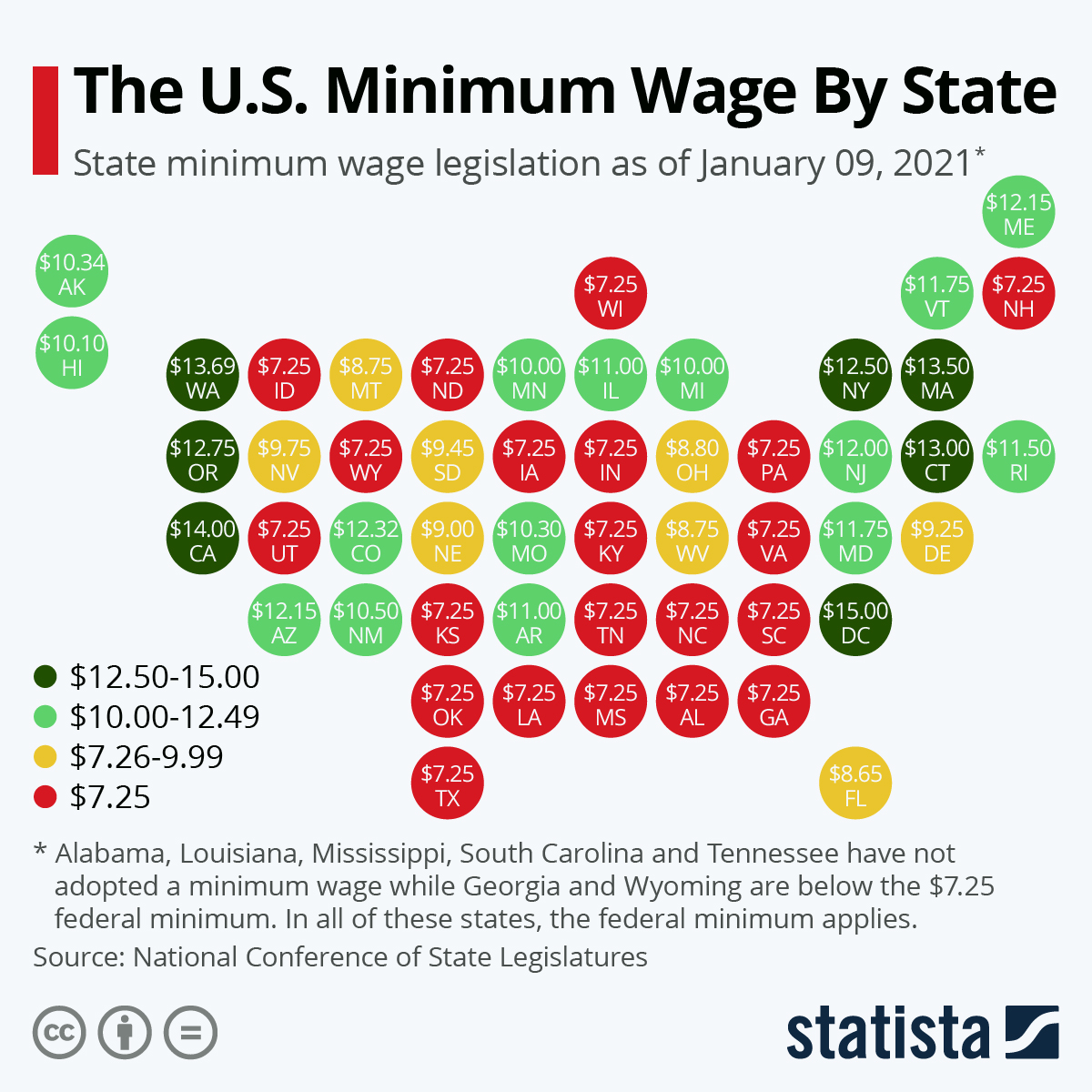 ] Federal Minimum Wage: `\(7.25\)` (not a place based policy) --- # Pb polcies: Enterpise zones .hi[.ul[Definition:] Enterprise zone]: > A geographic area that has been granted .pink[tax breaks, regulatory exemptions, or other public assistance] in order to encourage private economic development and job creation Examples: - Jersey City, NJ since 1983 - China: Shanghai and Shenzen (Special Economic Zones (SEZ)) --- # Pb polcies: Brownfield remediation .hi[.ul[Definition:] Brownfield]: > A geographic area that has previously been developed land that is not currently in use due to industrial and/or commerical pollution -- Examples include abandoned business such as: .pull-left[ - Gas stations - Dry cleaning - Factories] .pull-right[ - Mills - Foundries ] -- There are several Brownfields in the [Eugene/Springfield area](https://ofmpub.epa.gov/apex/cimc/f?p=CIMC:73::::73:P71_WELSEARCH:97405%7CZipcode%7C%7C%7C%7Ctrue%7Cfalse%7Cfalse%7Cfalse%7Cfalse%7Cfalse%7C(BF_ASSESS_IND%3D%27Y%27) - [Ninkasi over took a brownfield to expand brewing operations in 2012](https://youtu.be/D4RcUacsW3U?t=97) --- # Pb polcies: Brownfields remediation .center[ 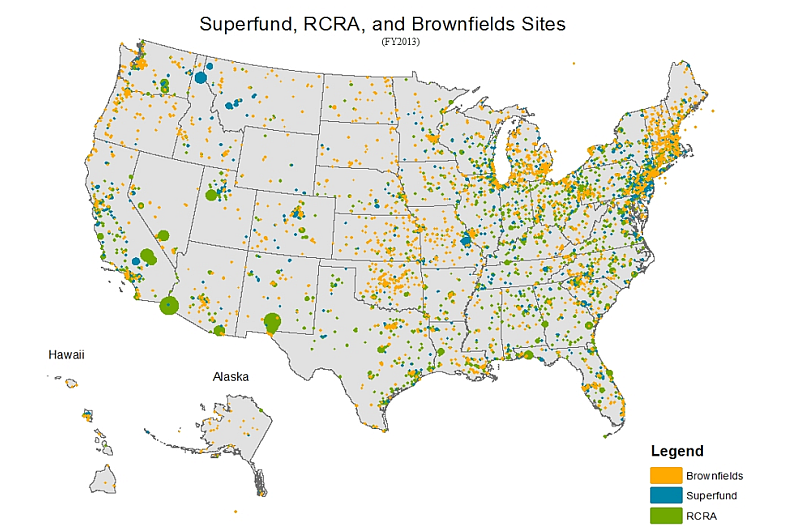 ] --- # Pb polcies: Brownfields remediation Brownfields lower the amenity value of neighborhoods - [High health costs associated with living near a brownfield](https://michellemmarcus.files.wordpress.com/2019/09/marcus_lust_092319.pdf) - Petroleum leaks from underground storage tanks lead to increases in the probability of low birth weights and preterm birth by .hi[7-8 percent] - Tremendously expensive to clean up Land is not used it is not contributing to local economies- opportunity cost -- Cleaning these up raises .hi[amenity value] of the neighborhood -- Property values around brownfields are far lower than comparable land - What happens to property values? Go up - .hii[Gentrification] --- # Pb policies: Air quality _December 2, 1970_: Environmental Protection Agency (EPA) is Established - Included the Clean Air Act - Regulates county level air quality with a system of air monitors -- .hi[Following years]: amendments to the CAA -- .pull-left[ - .hi[1990:] Additional power granted to state/local authorities to enforce air quality standards - .hi[1997:] PM 2.5 (particulate matter of 2.5 micrograms or less) standards placed ] -- .pull-right[ - .hi[2005:] PM2.5 standards enforced - .hi[2011:] Standards for greenhouse gases] --- # Pb polcies: Air quality Particulate Matter (.hi.orange[PM]) in the US is regulated at the .hi.green[county level]<sup>.pink[†]</sup> .footnote[ .pink[†] For more details, look [here](https://www.epa.gov/pm-pollution) ] -- If a county exceeds certain threshold for .hi.orange[PM] , all firms over a certain size need to pay a pretty big fine - Exceptions for fires, other natural events --- # Pb polcies: Air quality 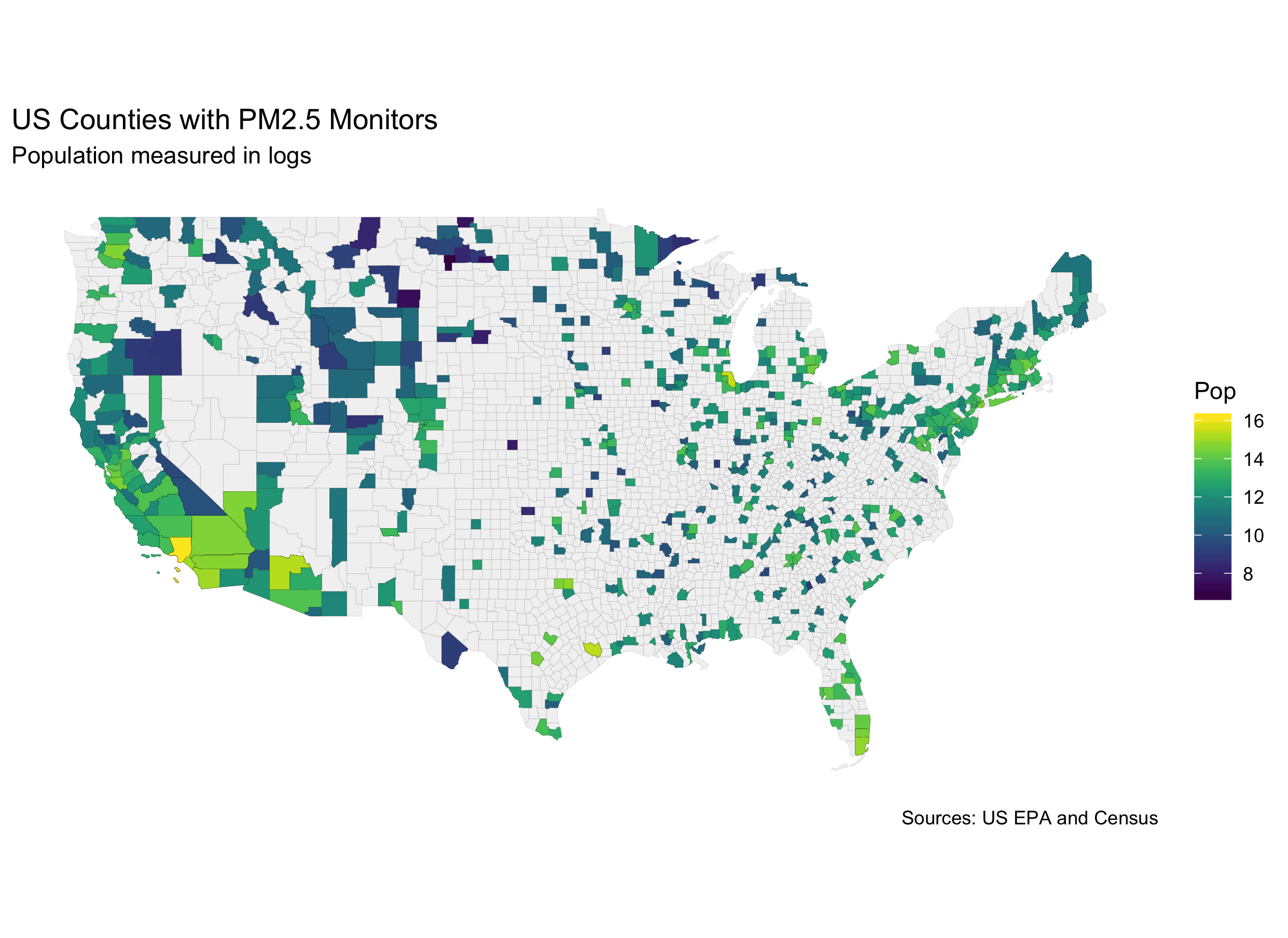 --- # Pb polcies: Air quality 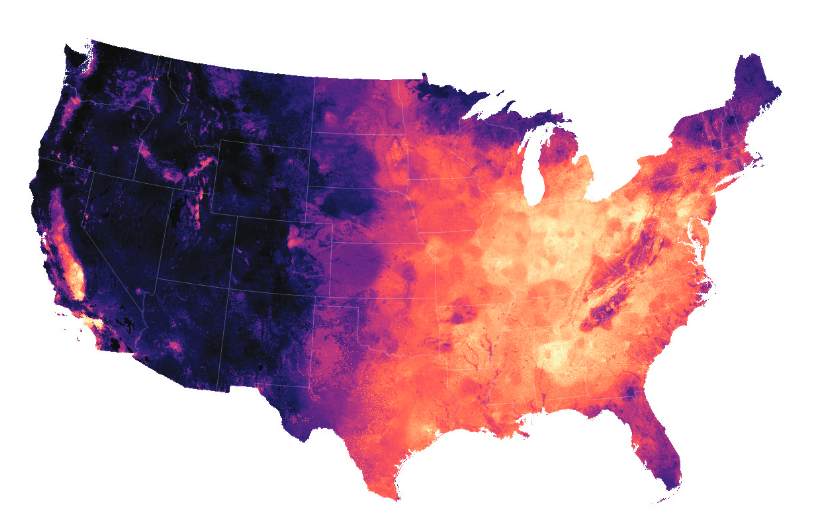 - [Di et al. (2016)](https://europepmc.org/backend/ptpmcrender.fcgi?accid=PMC5761665&blobtype=pdf) --- # Pb polcies: Air quality Does air quality monitoring make sense at a local level? Why or why not? -- .center[ 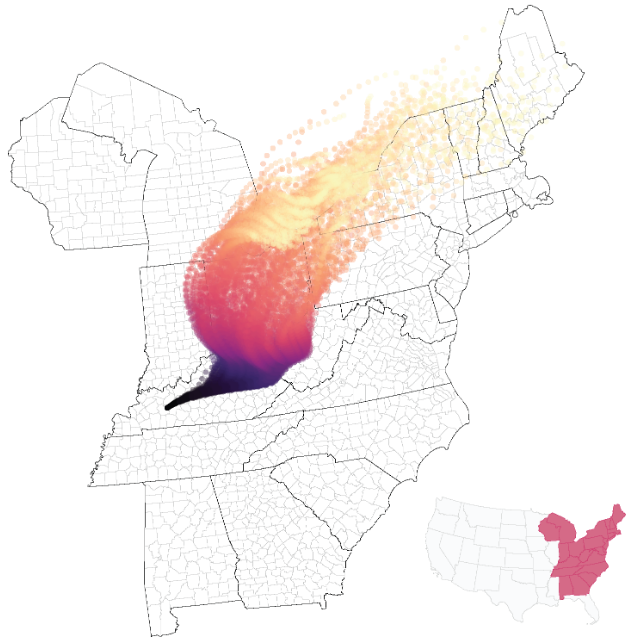 ] --- # Pb polcies: Discussion .hi[Why do we care about place-based policies?] -- .center[.hii[People are mobile and respond to changes in incentives]] -- Place-based policies influence .hi[location decisions] - TotC give really good intuition in the chapter about Detroit. <br> -- .hi[Question:] Why do federal policies impact cities differently? -- Min wage: might be .hi[binding] in some states, others not - Some labor markets might be competitive. Others not -- - Federal Income Tax: Cost of Living varies by state. --- class: inverse, middle, center # Utility framework --- # Utility framework This next section of the class will add another layer of complexity -- Set up a .hi[utility framework] to understand how policies impact welfare -- Only scratches the surface of how one may model impacts of pb policy -- <br> Some of these examples are based on [Mark Colas'](https://sites.google.com/site/markyaucolas/home?authuser=0) notes - Learn more about this in his 400 urban economics class --- # Utility framework .hi[Utility:] Abstract notions of people's preferences. .hii[Why does it matter?] -- Location based policies impact individual .hi[location decisions] - Model decision through the lens of an individual's utility (welfare) - Higher utility is better - `\(U(\text{City A}) > U(\text{City B})\)` `\(\implies\)` Moving to City A -- Suppose City B makes a policy change that raises wages - Now `\(U(\text{City A}) < U(\text{City B})\)` `\(\implies\)` Moving to City B -- Changes in a location based policy are going to change .hi[incentives] - eg. San Diego has extremely strict zoning restrictions -- Zoning restrictions `\(\implies\)` limited housing supply `\(\implies\)` high rents `\(\implies\)` "why do i live here.." `\(\implies\)` move to Oregon --- # Utility framework .hi[Example]: Preferences over left-shoes and right-shoes may be expressed with the following utility function: `\begin{align*} U(\text{left shoes},\text{right shoes}) = \min\left\{ \text{left shoes}, \text{right shoes} \right\} \end{align*}` .qa[Q:] In words, what does this say? -- .qa[A:] Another right shoe does nothing for me unless I get another left shoe -- <br> .qa[Q:] Give the above utility function, which bundle would I rather consume? `\begin{align*} \text{bundle 1}: (10000,1) \hspace{2in} \text{bundle 2}: (2,2) \end{align*}` -- .qa[A:] `\(U(10000,1) = 1 < U(2,2) = 2\)`, so I would rather consume bundle 2 --- # Utility framework .hi[Main point:] Utility is used to rank outcomes -- .hi[Remember:] Utility is .hii[ordinal] _not_ .hi-gold[cardinal] -- This means: we can only speak to the ordering of outcomes, not the levels - Many utility functions give equivalent preference rankings -- .hi[What if utility over shoes was:] `\begin{align*} U_2(\text{left shoes},\text{right shoes}) = 10*\min\left\{ \text{left shoes}, \text{right shoes} \right\} \end{align*}` .qa[Q:] Does this represent the same underlying preferences as before? -- .qa[A:] Yes, because `\(U_2(10000,1) = 10*1 = 10 < U_2(2,2) = 10*2 = 20\)` - So the bundle `\((2,2)\)` is still preferred to `\((10000,1)\)` --- # Utility framework: Locations .center[.hi[Could we write a utility function over locations?]] -- .center[.hii[Yes!]] -- What would a locational utility function take as .hi[inputs?] -- What do people make location decisions on? -- For now, assume people only care about 3 features of locations: -- .center[.hi[wages], .hii[rents], .hi-gold[amenites]] -- These all vary across locations, right? (first part of this class) -- Let `\(w_j\)`, `\(r_j\)`, and `\(a_j\)` denote wages, rents, and amenities in location `\(j\)` --- # Utility framework: Locations Let `\(w_j\)`, `\(r_j\)`, and `\(a_j\)` denote wages, rents, and amenities in location `\(j\)` - `\(j = SF\)`, for example -- .hi[General form]: `\(U(w_j, r_j,a_j) = U_j\)` - This says utility in location `\(j\)` is a function of wages, rents, and amenities, in location `\(j\)` -- In practice, could write down an infinite number of functions for `\(U(\cdot)\)` -- .hi[Usual assumptions:] .pull-left[ - Higher wages are better - Lower rents are better] .pull-right[ - More amenities are better] -- .center[.hii[Is this reasonable?]] --- # Utility framework: Locations .hi[Example:] Assume linear utility functions and everyone is identical: -- `\begin{align*} U(w_j, r_j, a_j) = w_j - .5*r_j + a_j \end{align*}` -- Suppose our two locations are SF and OAK again. If: - `\(w_{SF} = 10, r_{SF} = 8, a_{SF} = 4\)` - `\(w_{OAK} = 8, r_{OAK} = 3, a_{OAK} = 1\)` -- .qa[Q] How do workers sort across the cities? -- - `\(U(w_{SF}, r_{SF}, a_{SF}) = 10 - .5*8 + 4 = 10\)` - `\(U(w_{OAK}, r_{OAK}, a_{OAK}) = 8 - .5*3 + 1 = 7.5\)` -- .center[Well 10 > 7.5 so... everyone moves to SF] --- # Utility framework: Locations .center[.hi[Is it reasonable that everyone would move to SF? What are we missing?]] -- .center[.hi[Was that last example an example in locational equilibrium?]] -- .center[.hii[No!]] In .hi[locational equilibrium], utility is .hii[equalized across locations] -- Can't have: `\(U(w_{SF}, r_{SF}, a_{SF}) > U(w_{OAK}, r_{OAK}, a_{OAK})\)` -- <br> .center[.hi[How can we use locational eq to "fix up" our last example?]] -- We can .hii[allow rents] (or wages or both) .hii[to adjust] such that utility is equivalent across the two cities --- # Utility framework: Locations .hi[Another Problem:] People move and utility is equal across all locations -- .hi[Thus far], we assume .hii[wages] and .hi-gold[rents] are exogenous - Fall from the sky, do not change with location decisions -- .center[This is a .hi[bad assumption] right?] -- Let rents, but not wages, adjust to individual location decisions - Make rents .hii[endogenous] to the model --- # Utility framework: Rents Rents in every city given by: -- `\begin{align*} r_j(L_j) = 2\times L_j \end{align*}` -- - `\(r_j(L_j)\)`: rents _are a function_ of the population (not multiplied) - `\(L_j\)` is the pop in city `\(j\)`; choosing 2 was arbitrary -- Suppose we have two cities `\(1\)` and `\(2\)`, with 7 people total: `\(L_1 + L_2 = 7\)` -- .hi[Utility:] `\(U(w_{j}, r_{j}(L_j), a_{j}) = w_j - .5\times r_j(L_j) + a_j\)` .hii[Wages:] `\(w_1 = 12\)`, `\(w_2 = 7\)` .hi-gold[Rents:] `\(r_j(L_j) = 2*L_j\)` .hi-pink[Amenities:] `\(a_1 = a_2 = 0\)` --- # Utility framework: Rents example Suppose we have two cities `\(1\)` and `\(2\)`, with 7 people total: `\(L_1 + L_2 = 7\)` -- .hi[Utility:] `\(U(w_{j}, r_{j}(L_j), a_{j}) = w_j - .5\times r_j(L_j) + a_j\)` .hii[Wages:] `\(w_1 = 12\)`, `\(w_2 = 7\)` .hi-gold[Rents:] `\(r_j(L_j) = 2*L_j\)` .hi-pink[Amenities:] `\(a_1 = a_2 = 0\)` -- .qa[Qs:] How many people live in each city? What are rents in each city? .hi[Note:] You have .hi[two equations] and .hi[two unknowns] (namely, `\(L_1\)` and `\(L_2\)`) - `\(U(w_{1}, r_{1}(L_1), a_{1}) = U(w_{2}, r_{2}(L_1), a_{2})\)` (from locational eq) - `\(L_1 + L_2 = 7\)` you know the total population --- # Utility framework: Rents example Locational eq gives: -- `\begin{align*} w_1 - .5*r_1(L_1) &= w_2 - .5*r_1(L_2)\\ 12 - .5*(2*L_1) &= 7 - .5*(2*L_2)\\ -L_1 &= -5 - L_2\\ L_1 &= 5 + L_2 \end{align*}` -- Population must sum to 7. Thus: `\begin{align*} L_1 + L_2 &= 7\\ 5+ L_2 + L_2 &= 7\\ 2*L_2 &= 2\\ L_2 = 1 \implies L_1 = 6 \end{align*}` --- # Utility framework: Place based policies Ok, how do we tie this back into .hi[place-based] policies? .hi[Example] -- Initial equilibrium: `\(U(w_{j}, r_{j}(L_j),a_{j}) = k\)` for all cities `\(j\)` -- Suppose `\(SF\)` implements a 30%, flat, income tax - Post-tax wage in city `\(SF\)` is now `\(w^{tax}_{SF} = 0.7*w_{SF}\)` - Assume .hi[wages are fixed], but .hii[rents adjust to population] -- Utility in city `\(j\)` is: `\begin{align*} U(w^{tax}_{SF}, r_{SF}(L_{SF}),a_{SF}) < U(w_{SF}, r_{SF}(L_{SF}),a_{SF}) \end{align*}` -- If utility is .hi[increasing in wages], then an income-tax lowers utility. --- # Utility framework: Equilibrium .center[Can it be an equilibrium if:] `\begin{align*} U(w^{tax}_{SF}, r_{SF}(L_{SF}),a_{SF}) < U(w_{SF}, r_{SF}(L_{SF}),a_{SF}) \end{align*}` -- .center[.hii[No!]] -- Because `\(U(w_{SF}, r_{SF}(L_{SF}),a_{SF}) = k\)` So `\(U(w^{tax}_{SF}, r_{SF}(L_{SF}),a_{SF}) \neq k\)` -- Thus people move .hi[away from SF] and rents fall So utility goes up in SF until `\(U(w^{tax}_{SF}, r_{SF}(L_{SF}),a_{SF}) = k\)` --- # Extensions This flexible way of modeling gives us many options for modeling place based policies -- - Other kind of subsidies/taxes: goes into `\(w_j\)` - Rent subsidies or property taxes: impacts `\(r_j\)` -- - .qa[Q]: How would you model an increase in public school quality? --- class: inverse, middle, center # Fin